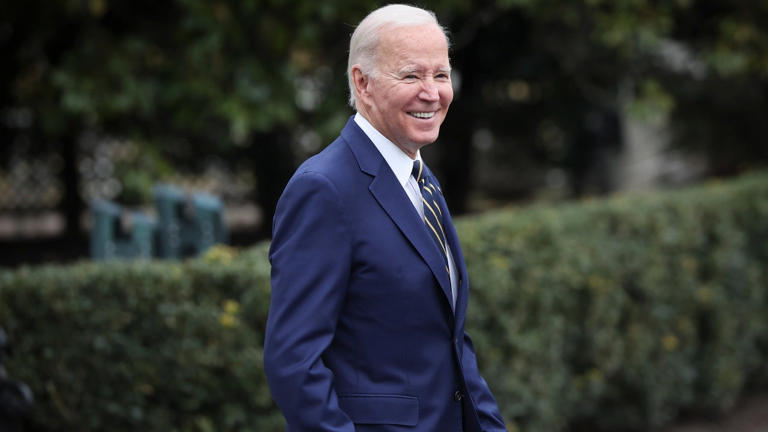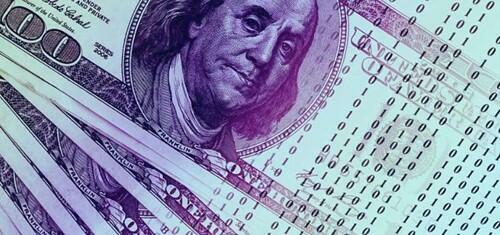Why Does Money Have Value? Not Because the Government Says It Does.
by Frank Shostak | Mises.org
October 6th 2021, 3:33 pm
Link:
https://www.infowars.com/posts/why-does-money-have-value-not-because-the-government-says-it-does/
Why do individuals desire to have money, which cannot be consumed and produces nothing?
To provide an answer to this one must go back in time to establish how money emerged.
Why does the dollar bill in our pockets have value?
According to some commentators, money has value because the government in power says so. For other commentators the value of money is on account of social convention. What this implies is that money has value because it is accepted, and why is it accepted? … because it is accepted! Obviously, this is not a good explanation of why money has value.
1

The difference between Money and Other Goods
Now, demand for a good arises from its perceived benefit. For instance, people demand food because of the nourishment it offers them once consumed. This is not so with respect to money. According to Murray N. Rothbard,
Money, per se, cannot be consumed and cannot be used directly as a producers’ good in the productive process. Money per se is therefore unproductive; it is dead stock and produces nothing.
2
Why, then, is there demand for money? Why do individuals desire to have something which cannot be consumed and produces nothing? To provide an answer to this one must go back in time to establish how money emerged.
In trying to improve their lives and well-being, individuals discovered that by replacing direct exchange, where individuals exchange one good for another good, with indirect exchange they could enhance the marketability of their produce. The introduction of indirect exchange means that the produce of an individual is exchanged for some more marketable good and then this good is exchanged for the produce of another individual.
The key to a good’s emergence as a mediator of indirect exchange is that it must be widely accepted. On this, Ludwig von Mises observed that, over time,
there would be an inevitable tendency for the less marketable of the series of goods used as media of exchange to be one by one rejected until at last only a single commodity remained, which was universally employed as a medium of exchange; in a word, money.
3
Similarly, Murray Rothbard wrote that,
Just as in nature, there is a great variety of skills and resources, so there is a variety in the marketability of goods. Some goods are more widely demanded than others, some are more divisible into smaller units without loss of value, some more durable over long periods of time, some more transportable over large distances. All of these advantages make for greater marketability. It is clear that in every society, the most marketable goods will be gradually selected as the media for exchange. As they are more and more selected as media, the demand for them increases because of this use, and so they become even more marketable. The result is a reinforcing spiral: more marketability causes wider use as a medium, which causes more marketability, etc. Eventually, one or two commodities are used as general media—in almost all exchanges—and these are called money.
4
Through the ongoing process of selection, people settled on gold as their preferred general medium of exchange. By means of money, individuals can make goods they have produced more marketable. Thus, a butcher can now trade with a vegetarian shoemaker. The butcher can exchange his meat for money and then exchange the money for shoes.
What makes goods more marketable is the wide acceptance of money by individuals. What gives rise to this acceptance is that money has a purchasing power, i.e., a price. People demand money because it has purchasing power. How does a thing that serves as the medium of exchange acquire its purchasing power—its price in terms of other goods?
We know that the law of supply and demand explains the price of a good. Likewise, it would appear that the same law should explain the price of money.
However, there is a problem with this way of thinking, since the demand for money arises because money has purchasing power, i.e., money has a price. Yet if the demand for money depends on its purchasing power, i.e., its price, how can this price be explained by demand?
We are seemingly caught here in a circular trap, for the purchasing power of money is explained by the demand for money while the demand for money is explained by its purchasing power.
This circularity seems to provide credibility to the view that the acceptance of money is the result of a government decree and social convention.
Mises Explained How Money’s Purchasing Power Originated
Now the process of selection explains how the most marketable commodity was selected as the general medium of exchange. This process however, does not tell us how the purchasing power of money originated.
In his writings, Mises showed how money acquired its purchasing power.
4 He began his analysis by noting that today’s demand for money is determined by the yesterday’s purchasing power of money. (Remember individuals accept money because it has purchasing power, a price).
Consequently, for a given supply of money, today’s purchasing power is established. Yesterday’s demand for money in turn was fixed by the prior day’s purchasing power of money. Therefore, the price of a given supply of money was set by yesterday’s price of money. The same procedure applies to past periods. By regressing through time, we will eventually arrive at a point in time when money was just an ordinary commodity whose price was set by demand and supply.
The commodity had an exchange value in terms of other commodities, i.e., its exchange value was established in barter. On the day a commodity becomes money, it already has an established purchasing power in terms of other goods. This price enables us to form a demand for this commodity as money.
This, in turn, sets the purchasing power of a given supply of this commodity on the day the commodity starts to function as money. Once the price of money is established, it becomes an input in tomorrow’s price of money.
It follows, then, that without yesterday’s information about the price of money, today’s purchasing power of money cannot be established. History is not required to establish the prices of other goods. A demand for these goods arises because of the perceived benefits of consuming them. But the benefit that money provides is that it can be exchanged for goods and services. Consequently, one needs to know the past purchasing power of money in order to establish today’s demand for money.
Using Mises’s framework of thought, also known as the
regression theorem, we can infer that it is not possible that money could have emerged as a result of a government decree, a government endorsement, or a social convention. The theorem shows that money must emerge as a commodity. On this Rothbard wrote,
In contrast to directly used consumers’ or producers’ goods, money must have pre-existing prices on which to ground a demand. But the only way this can happen is by beginning with a useful commodity under barter, and then adding demand for a medium to the previous demand for direct use (e.g., for ornaments, in the case of gold). Thus government is powerless to create money for the economy; the process of the free market can only develop it.
5
Note that the fact that a thing acquires a purchasing power in terms of other goods and services does not qualify it automatically as money. What is required is that the thing become the most marketable entity. The fact that potatoes have an exchange value with respect to various goods does not make potatoes the general medium of exchange. For this to happen, potatoes must acquire wide acceptance as the medium of exchange, i.e., one could use potatoes in most transactions.
Paper Money and Gold
How does all that we have said so far relate to the paper dollar? Originally, paper money was not regarded as money but merely as a representation of gold. Various paper certificates represented claims on gold stored with the banks. Holders of paper certificates could convert them into gold whenever they deemed necessary. Because people found it more convenient to use paper certificates in the exchange for goods and services, these certificates came to be regarded as money.
Because these certificates were seen as a representative of gold, they acquired purchasing power. Paper certificates that were accepted as the medium of exchange opened the door to fraudulent practice. Banks could now be tempted to boost their profits by lending certificates that were not actually covered by gold.
In a free market economy, a bank that overissues paper certificates will quickly find that the exchange value of its certificates in terms of goods and services is starting to decline. To protect their purchasing power, the holders of the overissued certificates would most likely attempt to convert them back into gold. If all of them were to demand gold back at the same time, this would bankrupt the bank. In a free market, then, the threat of bankruptcy would restrain banks from issuing paper certificates unbacked by gold.
The government can, however, bypass the free market discipline. It can issue a decree that makes it legal for the overissued banks not to redeem paper certificates into gold.
Once banks are not obliged to redeem paper certificates into gold, opportunities for large profits emerge that create incentives to pursue an unrestrained expansion of the supply of paper certificates. The unrestrained expansion of paper certificates raises the likelihood of setting off a galloping rise in the prices of goods and services that can lead to the breakdown of the market economy.
To prevent such a breakdown, the supply of paper money must be managed. An important reason for managing the supply, in addition to preventing galloping increases in prices, is to prevent various competing banks from bankrupting each other. This can be achieved by establishing a monopoly bank—i.e., a central bank—that manages the expansion of paper money. To assert its authority, the central bank introduces its own paper certificate, which replaces the certificates of various banks. The central bank paper certificate is exchanged for the other banks’ certificates at a fixed rate.
The central bank’s paper certificates’ purchasing power is established on the that of the certificates of the various banks. These certificates have a purchasing power because of their link to gold. Hence, the central bank’s paper certificates, which is fully backed by the other bank certificates, is also linked to gold. It follows, then, that the central bank’s paper certificates also acquired their purchasing power because of the link to gold.
Now, following the regression theorem, once the central bank paper certificate has acquired its purchasing power, this serves as an input in the demand for it. The current purchasing power of a given current supply of the central bank paper certificates can thus be established. Hence, the value of the central bank paper certificate, i.e., the paper money known as dollars, is established on account of its historical link to gold.
Conclusion
Contrary to the popular way of thinking, the value of a paper dollar originates in its link to gold—and not government decree or social convention. Following Ludwig von Mises’s regression theorem, money must have originated as a commodity. Furthermore, the fact that an entity has established a purchasing power with respect to various goods and services does not automatically qualify it as money, i.e., as the general medium of exchange. For the entity to become money, it must have wide acceptance.




